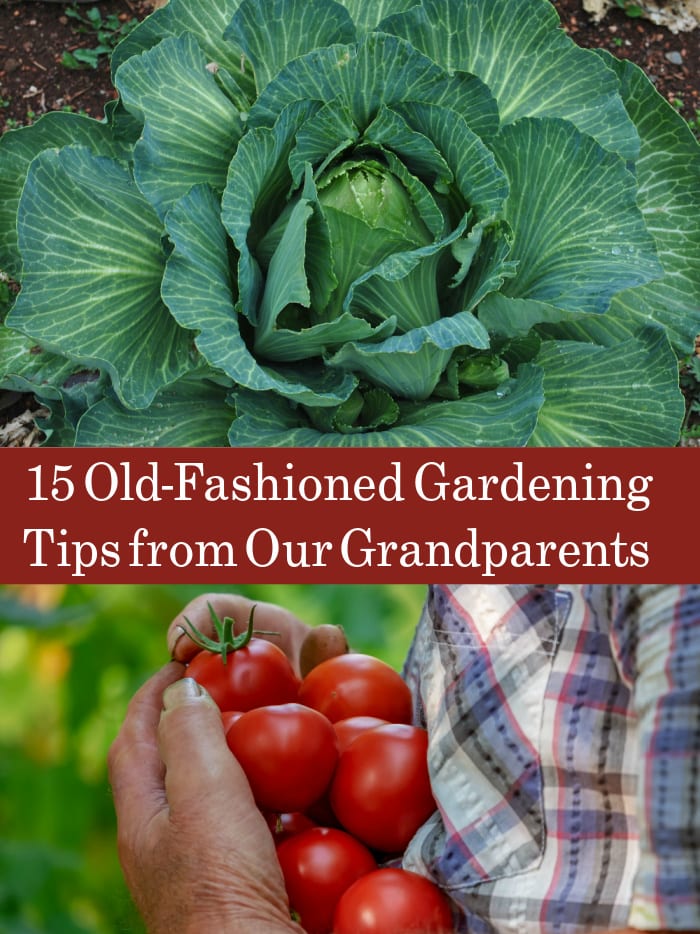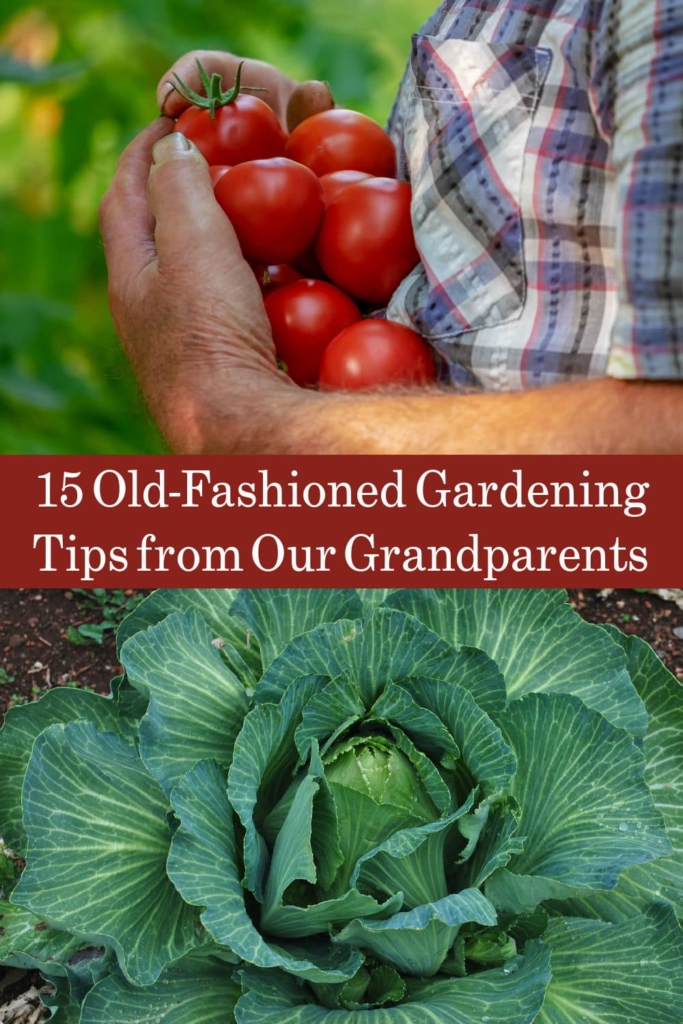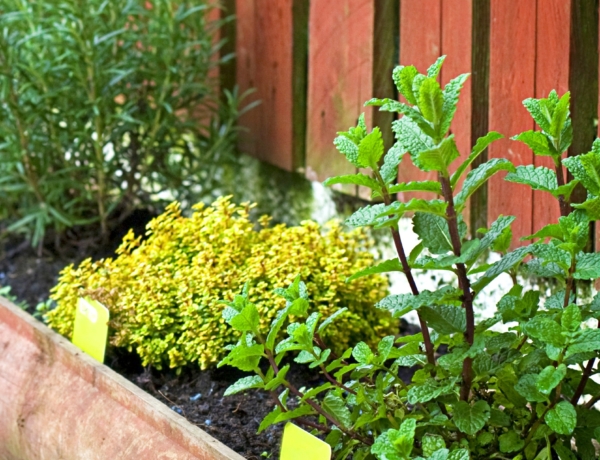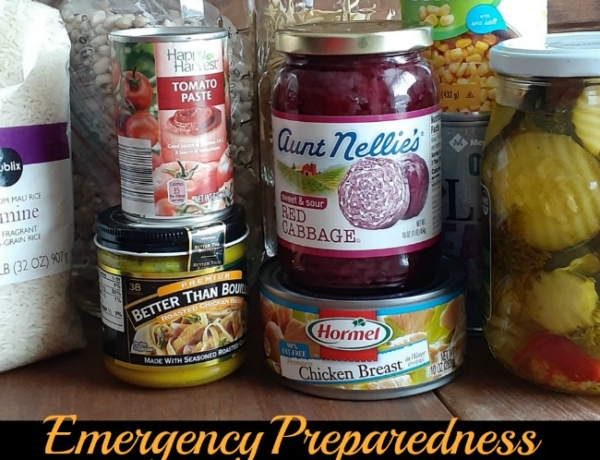Although I was trained as a biologist, and I am truly a bit of a science nerd, I still believe it’s worthwhile to keep the old ways alive and to honor the wisdom of previous generations (whether it’s to put into practice or just for the history of it). And in that spirit, I’ve put together a list of garden tips and tricks that our grandparents and great-grandparents may have used in their own gardens. Now some of these old-fashioned tips and tricks are based only on anecdotes, observation, and folklore, while some tips have gone on to be backed by science. But in any case, I hope you find them to be interesting or useful in some way.

1. Plant Friends Together
This ancient system of pairing plants together in the garden has been making a comeback since the organic movement of the 1970s. Part science and part folklore, companion planting is the art and science of pairing compatible plants (or friends) together in order to create a healthier, more productive vegetable garden. Attracting pollinators and beneficial insects, and also repelling pests are only a few of the many ways that companion planting can benefit a garden. A well-known example of companion planting is the Three Sisters method of planting corn, beans, and squash which was used by Native Americans.
And sometimes, the aim of companion planting is knowing which plants not to plant in proximity to each other (non-compatible plants are often referred to as foes). This is the case with Black Walnut trees which create a substance called juglone that seeps in the soil and can kill certain plants.
If you find the idea of companion planting interesting, more in-depth information can be found in this article by Grit Magazine and in this chart by The Old Farmer’s Almanac.
2. Use Cornmeal to Sow Tiny Seeds
Sow tiny seeds by mixing seeds with an equal amount of cornmeal. This allows seeds to be distributed more evenly, and for the placement of the seeds on the soil to be more visible against the light background of the cornmeal.
3. Save Your Fingernails with Soap
Do you have a hard time scrubbing the dirt and green stains from your fingernails after a day in the garden? An easy fix for this is to scrape your fingernails over a bar of soap before gardening and they will stay clean and free of stains.
4. Use Green Manure for a Bountiful Garden
Despite the name, green manure actually has nothing to do with poop. It is the age-old practice of sowing cover crops that will later be turned over and incorporated into the soil. Green manure adds nutrients and improves soil structure. You can read more about incorporating green manure in your garden here.
5. Treat ‘Em Mean for Better Tomatoes
Back in my early gardening days, an older gardener once told me that I needed to treat my tomato plants a little mean. This may sound harsh, but what this really means is that in order to have strong tomato plants and abundant fruit, you need to avoid coddling them.
Overwatering can choke the roots of the plant and also result in a poorly developed root system. Allowing the soil to dry out a little between waterings encourages the plant to reach out and grow deep roots, making for a stronger, healthier plant. So water your tomatoes less frequently (2-3 times a week) but more deeply so that the water seeps down into the soil.
And when it comes to fertilizer, it’s possible to add too much of a good thing to your garden. Over-fertilizing and adding too much nitrogen will make your tomato plants grow big beautiful foliage, but very little fruit. You can determine the nutrient levels of your soil by using a home test kit or sending a soil sample to your local county extension for testing.
6. Use Pie Plates for the Birds
Hang a few aluminum pie tins from a fence or trellis in the garden, or from a branch on your fruit tree. The flashing of the reflected light and the sounds they make banging together help to deter birds and other critters from feasting on your garden.
7. Give the Slugs a Brew
Place a shallow pan of beer in the garden to help trap slugs and snails. Apparently, slugs are attracted to beer (who knew?!), and they will crawl into the pan and drown (there are worse ways to go!) This may not 100% solve your slug problem, but you will trap at least a few this way.
8. Bury Your Kitchen Scraps
Composting in place, also called trench composting, was more common in previous generations than was a traditional compost pile. The basic idea is to dig holes or shallow trenches in your garden and fill them with the things you would normally add to a compost pile. This is an especially good method if you don’t have the room for a compost pile, or if local ordinances prohibit them. To compost in place, simply dig a shallow trench in between garden plantings and fill it with kitchen scraps like eggshells, coffee grounds, and peelings. Cover with soil and that’s it. When you’re ready to add more, simply dig a new trench. Read more about it in this post by Morning Chores.
9. Plant Flowers for the Insects
Pollinators aren’t the only important insects in the garden. Plant flowers and herbs that attract other beneficial insects like ladybugs, praying mantises, and parasitic wasps. Find out more in this article by Penn State Extension and in this one by Fine Gardening.
10. Pick the Bugs
Don’t forget about using mechanical means of pest control. To help rid your garden of pests like Japanese Beetles and Hornworms, handpick them from your plants and drop them in a bucket of soapy water to drown them.
11. Deadhead Your Flowers
Our grandmothers always remembered to deadhead her flowers to keep them beautiful throughout the summer. Simply taking a few minutes to remove the dead or fading flowers will help to maintain the health and appearance of the plants and to encourage new blooms to form.
12. Take Good Care of Your Tools
Our grandparents knew the value of a dollar and took great care of their stuff, including their garden tools. Help to keep your tools clean and free of rust by storing them in a bucket of sand mixed with a little mineral oil
13. Use Old Pantyhose
Upcycle old pantyhose (now there is an old-fashioned word I haven’t used in a while) by using them in the garden. Soft and stretchy, strips cut from pantyhose work great to tie up tomatoes. They are also useful for storing onions after they are harvested and cured.
14. Save the Hair from your Hairbrush
Now I don’t know if this one falls into the science or folklore category, but an old-time garden tip for keeping rabbits out of the garden is to scatter some hair from your hairbrush around the garden. And even if it doesn’t deter the rabbits, it makes nice nesting material for birds.
15. Plant by the Signs and Moon Phases
Now, this definitely falls into the folklore category, but many of our great-grandparents swore by using the zodiac signs and the moon phases to guide their planting (and also food preservation – like making sauerkraut). In fact, many people where I live here in the southern Appalachians still use this system. If you want to learn more about this very interesting subject, I will refer you to these links:
The Blind Pig and the Acorn – Planting by the Signs, WV Culture, and Appalachian Magazine
For books on the subject, I recommend this kindle book or this paperback, both from the Foxfire organization located here in southern Appalachia.
If you’ve used any of these tips from Grandma and Grandpa’s day, please let me know in the comments. Either way, I hope you’ve found this list interesting!

*This post may contain affiliate links, which means I will earn a commission at no additional cost to you if you click through and make a purchase.*





10 Comments
Laurie
July 17, 2019 at 3:15 pmThese are some great tips!
Most of them are very simple to put into practice, too!
Thanks so much for sharing!
Blessings, Laurie
Melissa
July 17, 2019 at 4:48 pmI am so glad you like my tips! And thank-you for the feature!
liz
July 18, 2019 at 7:44 pmExcellent tips! I try to keep companion planting in mind when gardening. I’m not entirely sure it helps, but at the very least it gives me a nice variety of plants instead of just boring rows. Thanks for sharing on Homestead Blog Hop, we are featuring you this week!
Tips for Starting a Modern-Day Victory Garden - My Homemade Roots
April 11, 2022 at 4:05 am[…] The original Victory Gardens began in world War I and became even more popular again during World War II. During these times, citizens of the U.S., Canada, Britain, and Australia were encouraged to grow food in any available space in order to supplement their rations and to ease the burden on the food supply system. The results were spectacular. Suburbanites, urbanites, and rural communities collectively grew millions of tons of vegetables during this period. And although this may sound interesting, you may still be wondering how to start a victory garden today. If so, stay tuned, and will give you some of my tips for getting started. (And if you’re interested in growing a garden, check out my Old-Fashioned Gardening Tips from our Grandparents!) […]
Cindy
January 4, 2023 at 1:51 amThank you for sharing. I’ve been gardening for only a couple of years and taught myself how to can. I love being able to grow my own food and share with others. I appreciate all the tips you shared. Will definitely be trying them.
Melissa
January 4, 2023 at 6:23 pmYou’re very welcome! That’s fantastic that you are canning and gardening. It’s so rewarding to be able to enjoy homegrown food and to share the bounty with others!
Homestead Blog Hop 248 - Simple Life Mom
July 16, 2023 at 4:32 am[…] 15 Old Fashioned Garden Tips From Our Grandparents from My Homemade […]
Lisa Walker
August 6, 2024 at 6:11 pmMy husband is never gentle w/tomato plants. When he buys the plants he’ll dig the hole & then put @ least 1/2 of the plant in the ground. This is what helps you have a better/stronger root system for your tomato plant. By the middle of tomato season, he has to get a step ladder to stand on to pick tomatoes. No lie, he makes his cages w/2 5′ sections of wire stacked on top of each other, 10′ of the wire and tomato plants are out of the top of the cage by @ least a foot. He has the greenest thumb of anyone I know. Everything he plants always lives even if it looks dead when he plants it.
Melissa Lynn
August 27, 2024 at 3:20 amYour husband sounds like he has a gift for gardening!
Autumn Gardening: 6 Favorite Vegetables to Plant in the Fall Vegetable Garden - My Homemade Roots
October 22, 2024 at 6:59 pm[…] If you’re new to gardening or have been a strictly summer gardener, you may not realize that fall can be the perfect time to start a new crop of vegetables in your garden. Truth be told, autumn is my favorite time to garden. The pleasant cooler temperatures and the reduced pest pressure make it an ideal season for planting hardy crops that thrive this time of year. {And if you enjoy gardening, or reading about gardening, check out my article on 15 Old-Fashioned Gardening Tips from Our Grandparents.} […]